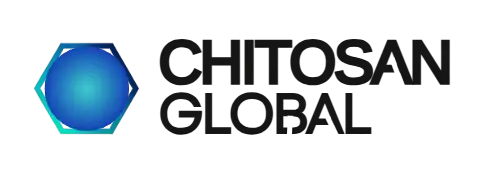How Quaternary Chitosan is Revolutionizing Institutional Disinfection Practices

What are the benefits of chitosan in disinfection applications? Antimicrobial Properties: Chitosan has strong antimicrobial properties against a wide range of pathogens including bacteria, fungi, and viruses. This makes it an effective agent for disinfection purposes. Biodegradability: As a natural biopolymer, chitosan is biodegradable. This quality makes it environmentally friendly compared to synthetic disinfectants, which can accumulate and cause environmental damage. Non-toxicity: Unlike many chemical disinfectants, chitosan is non-toxic to humans and animals at the concentrations and forms used for disinfection. This makes it safe for use in various settings, including food preservation, water treatment, and surface sanitization. Film-Forming Ability: Chitosan can form bioactive films and coatings that can be applied to surfaces for prolonged antimicrobial protection. This is particularly useful for keeping surfaces sterile over time without continuous application of disinfectant. Metal Ion Chelation: Chitosan has the ability to chelate metal ions, which can enhance its antimicrobial effectiveness. The presence of chitosan can disrupt microbial cell walls by binding to essential metals required by bacteria and fungi. Enhanced Efficacy with pH Sensitivity: Chitosan’s antimicrobial activity can be enhanced in acidic environments, which is beneficial since many disinfection scenarios involve controlled pH conditions. These properties make chitosan an attractive option for disinfection in various applications, particularly where environmental impact and human safety are major factors. What are the disinfection applications that can employ chitosan? Chitosan, with its natural antimicrobial and biodegradable properties, is versatile and can be integrated into several of the disinfection application areas and product types. The addition ratio of chitosan and formulation guidelines can also vary widely based on the specific application, desired properties, and regulatory requirements. We have found, through lab tests at the University of Arizona, that mushroom chitosan, combined with citric acid, is lethal to pathogenic bacteria at a 1% concentration. Here’s how it can be applied across these various sectors and some general guidelines and typical ratios used in different products and applications: Healthcare Facilities, Schools, Jails, Government Buildings, Butcher and Meat packaging: Surface Disinfectants: Chitosan can be used to formulate sprays and wipes that are effective against bacteria and viruses, suitable for cleaning patient rooms and other surfaces. Instrument Disinfectants: It can be part of solutions for sterilizing medical instruments, offering a non-toxic and biodegradable alternative to harsh chemicals. Addition Ratio: Around 1% to chitosan in the formulation plus a proton donator such as acetic acid or citric acid. For making quaternary chitosan antibacterial spray concentrate, no acid for proton donation is required. Formulation Guideline: The product should be tested to ensure it does not leave residues that could interfere with healthcare operations. Compatibility with various surface materials is also essential. Chitosan is the most powerful and effective non-toxic antimicrobial compound to come along since the discovery of quaternary ammonium compounds nearly a century ago.“Quats” were created to clean institutions and hospitals back in the day and still are. The problem is, they are toxic to people.It’s time to replace toxic antimicrobial “quat” products with non-toxic ones containing chitosan! To purchase quaternary chitosan in bulk at wholesale prices, click HERE Water Treatment: Chemical Disinfectants: Chitosan is useful in water purification systems for binding and neutralizing pathogens and heavy metals, enhancing the quality of drinking water without harsh chemicals. Addition Ratio: Typically, 1 to 5 grams per liter of water, depending on the level of contamination and the purity required. Formulation Guideline: Chitosan is often used as a flocculant; it helps to agglomerate suspended particles for easier removal. The pH of the water may need to be adjusted to optimize chitosan’s effectiveness, as it performs best in slightly acidic conditions. Food and Beverage Industry: Food Surface Sanitizers: Chitosan-based sanitizers can be used on food-contact surfaces to inhibit microbial growth, helping maintain hygiene in food processing areas. Food Processing Disinfectants: As a natural antimicrobial, chitosan can be used to keep food processing environments sterile and free from contaminants. Addition Ratio: About 0.5% to 2% chitosan in solution. Formulation Guideline: Chitosan solutions for surface sanitizing should be compatible with food safety standards. Formulations might also include mild acids like acetic acid to enhance antimicrobial efficacy. Public and Commercial Areas: Air Disinfectants: Integrated into air filtration systems, chitosan can help in capturing and neutralizing airborne pathogens, suitable for places like schools and offices. Addition Ratio: Not typically applied as a percentage; instead, chitosan is incorporated into the filter material during manufacturing. Formulation Guideline: Ensure the chitosan is properly embedded within the filter media to maintain air flow and filtration efficiency. Household Settings: Multipurpose Disinfectants: Home cleaning products can include chitosan for its antimicrobial properties, making it ideal for kitchen, bathroom, and general household cleaning. Laundry Sanitizers: Chitosan can be added to laundry detergents to help eliminate bacteria and viruses from fabrics during washing. Addition Ratio: Usually around 0.5% to 2%. Formulation Guideline: Products should be designed to maintain efficacy across a range of surface types and dirt levels. pH and stability tests are crucial to ensure long shelf life. Industrial and Manufacturing: Industrial Cleaners: Due to its effectiveness and safety, chitosan can be included in cleaners for use in manufacturing environments where non-toxic and eco-friendly solutions are preferred. Addition Ratio: Coating solutions might contain 1% to 3% chitosan. Formulation Guideline: In textiles, chitosan treatments should be applied so that they bond well with the fabric without affecting its breathability and texture. Agriculture and Horticulture: Greenhouse Sanitizers: Chitosan can be used to disinfect greenhouse surfaces and equipment, protecting plants from microbial infections. Livestock Disinfectants: It can be used in formulations to sanitize animal housing, providing a safe environment for livestock. Addition Ratio: Typically around 1% to 2% chitosan. Formulation Guideline: Ensure that the chitosan does not negatively affect plant growth; compatibility with various plant species can vary. General Considerations pH Sensitivity: Chitosan’s solubility and effectiveness are pH-dependent, with optimal performance in the pH range of 6.4 and below. Compatibility: Ensure that chitosan is compatible with other components in the formulation and does not react undesirably. Regulatory Compliance: Always consider local regulations regarding the use of biopolymers in consumer and industrial products, especially
